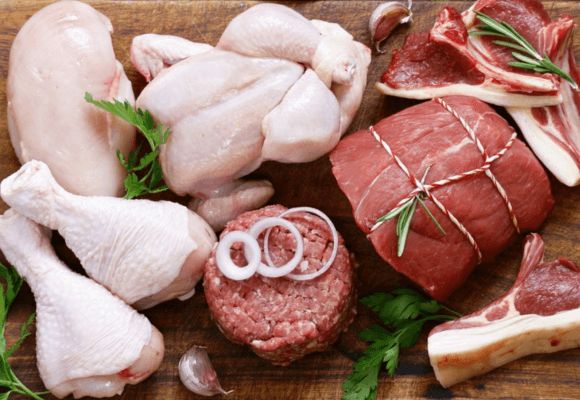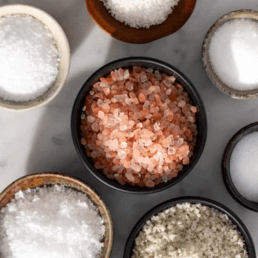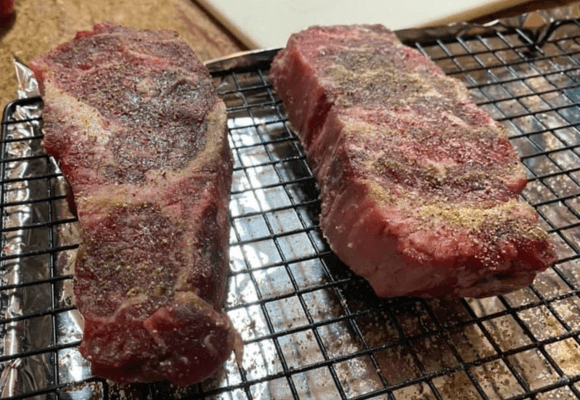Brining is a procedure that can be used to flavor or enhance the juiciness of any piece of meat and for different kinds of food items such as turkey, chicken, fish, pork, and even vegetables, but how to brine practically any meat?
The ancient technique of brining has been around long before the dawn of time, primarily, previously used for preserving fish and meat as an alternative to the modern invention of refrigeration. However, over time, brining been adopted to prepare dry and tough meat so that the outcome is perfectly juicy and tender.
Method of brining is essentially basic meat preparation before it reaches the grill; therefore, this article will tell you everything about brine and how to brine practically any meat.
How To Brine Practically Any Meat?
When the question comes down to how to brine practically any meat, the key principle behind the technique is to ensure that a reaction of the meat’s moisture occurs with a salt solution.
The salt solution is responsible for trapping water in the meat so it is retained, and when cooked, the moisture stays in, and all of it does not evaporate.
The handy brining trick is to formulate a brine with an ideal salt content that is not salty enough to over-brine the meat and make it inherently saline in flavor. Depending on the kind of proteins you use, some would be wet-brined, while others would be best when dry-brined.
Nevertheless, a dry and a wet brine can both sometimes be applied to the meat. Though they work in similar ways, serving a similar purpose, they still have significant differences. For example, a wet brine creates a lump of more salty meat by delving deeper into the meat and amplifying the added flavors.
On the other hand, a traditional dry brine is good because it contributes to the finished flavor, trapping the surface moisture as the salt does not penetrate the meat much and remains over the meat. This brining will result in crispy bark with a golden skin of the smoked meat.
Generally, wet or dry brine will only briefly penetrate the meat’s surface. Thus, it creates a barrier by denaturing the meat’s proteins so the cells can keep the meat’s internal juice and prevent them from being released after exposure to increased heat temperatures.
Additionally, the brine causes the meat’s muscle fibers to swell and unravel to tenderize the meat. A juicier and moist piece of meat is cooked with the trapped liquid.
What Food Items Can Be Brined?
It is impossible to brine practically any meat because not every meat demands brining. As the benefits of brining are flavor and juiciness, good candidates for brining are meats with less fat, such as lean meats that tend to have less flavor and dry out faster.
You can brine pork loin, pork chops, chicken breasts, pork tenderloin, shrimp, turkey, and poultry. On the flip side, lamb and beef are those meats that should not be brined, they already have sufficient flavor and are fatty. These meats need not be brined as they are flavorful and juicy by default.
Keep in mind, whenever you go to purchase a piece of meat that is to be brined later on, check the label to ensure that a salty solution has not been injected into it already because if brined with a salty solution twice, the food can taste awful.

Some meats are not fatty but are of smaller cuts and, beforehand tender, do not require to undergo dry or wet brining like a fatty chicken thigh, juicy filet mignon, and a flaky fish.
Brining And Timing
There are varying views and opinions about brining and timing, but the general rule of thumb for brining dictates that a cook should not leave their meat to brine for more than one hour per pound.
To approximate the time for brining, use the weight of the meat and equate each pound with an hour of brining. Meat should not be brined more than the prescribed amount because the proteins’ breakdown will go too far and deteriorate the quality of your meat, transforming it into an unappetizing and inedible mush.
For example, a turkey typically weighs 12 to 14 pounds, so an overnight brine of water and salt will add flavor and moisture to the turkey.
| Meat | Brine Time |
|---|---|
| Whole Chicken (Which Weight 3-4 Pound) | 3 To 4 Hours |
| Shrimp | 30 Min |
| Pork Tenderloin (Whole) | 12 Hours |
| Turkey (12-14 Pounds) | 12 Hours |
| Cornish Hens | 1 To 2 Hours |
How To Do Brining?
Notably, the amount of salt added to the brine formulation highly depends on the recipe and the kind of salt you use. You can use any type of salt to brine: Morton’s kosher salt, diamond crystal kosher salt, or mere table salt that is finely grounded.
The basic water-to-salt ratio for a wet brine is four cups of water to one cup of salt, which is to be first heated and then boiled in a large pot on the stove-top. Until the solution has boiled, gently continue stirring with a utensil so the salt dissolves completely into the water.

Many people prefer using kosher salt due to its convenient dissolubility, but a brined salt works well. As far as additional ingredients are concerned, sugar has been renowned for making a subtle difference to the brine’s salty flavor. When spices and herbs are added to the brine, it, at best, results in a mild difference.
You would have to take some additional steps to include extra ingredients in your typical two-ingredient brine recipe. For instance, many brines prepped for turkey are boiled with aromatics in the water before the salt is added so that the water infuses with the flavor suitably.
However, an alternative and a more potent manner to add other flavors to your typical salt brine is to put salt and cold water together in a food processor alongside onion, raw garlic, and fresh herbs to create a flavorful and slurry solution that adds an optimal flavor to turkey and chicken.
Brining Ideas
Different types of salt take up different volumes of water, so when choosing any salt, add an adequate amount of liquid. Kosher salt is less fine than table salt, which is finer and will require only half a cup of salt to make the meat taste saltier. Hence, stick to using kosher salt for brining unless advised otherwise by your recipe.
Sugar, spice, and herbs are not the only ingredients aside from water and salt that can be added to form a brine, but some other brining ideas that we have in store for you are as follows:
Adding Alcohol
If you want the flavor to penetrate deeply into the meat, add a few tablespoons of alcohol to the brine. Use a relatively neutral or strong alcohol such as vodka, or add 1/4 cup of gin and rum, which are widely known to be flavorful.
Again, remember, the stronger the alcohol, the less the quantity of it will be added to the brine. Less vodka and more of weaker alcohols like beer and wine can be added to the salt and water solution.
Adding Molasses, Brown Sugar, or Sugar
Sugar not only adds a sweetened flavor to the meat but simultaneously also promotes its browning. Commonly, sugar is added as much as salt or more than salt if desired. Such a sugar-infused brine will be appropriate, especially with grilled pork chops or simple pork.
Skipping Water
We know that a standard brine is made of salt and water, but you can skip out on the water and instead substitute the brine base with another liquid. Try using chicken broth or apple juice to replace water, absolutely or partially.
If not the juices, you can eliminate water in brining and add pickle juice or buttermilk to the brine. However, when using acidic liquid ingredients and not water, the brining time must be reduced, or the acid will completely break down all proteins inside the meat, providing it with a mushy and unpleasant external texture.
Other Flavorful Ingredient Recommendations
A fantastic way to amp up the brine’s flavor is by adding zest (citrus peel) or fresh herbs. People specifically like adding herbs to turkey and chicken. Herbs and other sauces like Worcestershire and soy sauce can be flavorful ingredients in addition to onion and garlic.
For a flawless infusion of these extra ingredients in the brine, add them to the liquid with salt, let all the ingredients boil, and then cool down before the meat is added to the solution.
Recommended Salt Type

Like everything, salt comes in multiple variations; some crystals will be massive, while others will be minute. Coarse kosher salt is recommended and highlighted in many recipes.
This is because it has a large crystal size, which is good for interacting with and working well with many different kinds of meat, enhancing its texture while preventing the risk of salt-dominated flavor.
Comparatively, table salt has a finer crystal size and an essential nutrient, iodine, added to it, which is lacking in many diets. Though, with the addition of table salt in the brine, many people claim not to notice a difference in the taste; some claim, on the contrary, that table salt significantly elevates the flavor.
Due to its fine crystals, table salt is much saltier than all the other kinds of salt, and it is not prohibited to use this salt for brine formulation, but considering the crystal size, you simply have to use it in a lesser quantity.
Regardless, the most recommended salt type for brine is kosher coarse salt, and the underlying reason behind this is that it is pure salt with no additive ingredients, which means that it will give brine the purest salt flavor of all.
Dry Brine Vs. Wet Brine
You might have noticed us stating that you can add salt to water or use salt to brine meat. Essentially, these two distinctions fall under the two prominent brining categories: dry brine vs. wet brine.
Dry Brine
The term dry brine is technically a misnomer because “brining” conventionally implies a liquid composition. In contrast, dry brining could be more accurately defined as a “cure” or a “rub” on the meat’s surface.

The result of a dry brine in relation to a wet brine is quite similar, and both techniques make the meat more flavorful and juiced. When meat is coated in salt through a dry brine, the seasoning and the moisture are re-distributed and further integrated deeply into the meat.
However, dry brining can be opted for by those looking forward to conducting a simple brine technique that is not messy or a nuisance to clean. Likewise, it is a simple and quick seasoning option if you have limited fridge space, which is unaccommodating for placing large pots of meat submerged in a salt and water solution.
Wet Brine
The ratio for creating a wet brine is one gallon of water to one cup of kosher salt, which has to fully dissolve in water for the meat to be submerged and brined. Let’s say you feel fancy and are ready to take a few extra steps.
Then, add some peppercorns, citrus, smashed garlic cloves, or a sweetener like brown sugar or honey to water with salt. Or you could substitute water with another liquid like apple juice to give your poultry an autumnal yet sweet flavor.
A tip that has proven to be highly effective, especially for brining turkey or any other meat that has a skin, is first to submerge the meat in the brine, then drain the solution, pat dry the meat with a paper towel, and right before a few hours prior to cooking, leave the meat uncovered in the fridge to rest.
This will ensure that the meat has completely retained all the flavors and moisture, resulting in tender, juicy, shatteringly crisped skin, and beautifully cooked golden brown meat.
Wet brining is only preferable if you have massive refrigeration and free storage space to keep the large pot containing the brine solution and meat in it for expansive hours. Also, if you are someone who easily gets an “ick,” then dealing with a wet brine is not your piece of cake because the solution with the meat can be slimy and squeamish.
Brining Tips
As straightforward as conducting a dry or wet brine may seem, you must follow certain crucial food safety tips to avoid falling sick or having the meat go stale due to brining or eating brine-cooked food.

- Salmonella is a scary bacteria that can ruin the brined meat, and to avoid this from materializing, always place your brined meat in the fridge. It does not matter if you wet or dry brined the meat; the meat must be going into the fridge to rest.
- Again, meat should not be exposed to the air after brining because it massively increases your likelihood of contracting a foodborne illness.
- After the meat is taken out from refrigeration to be cooked, do not immediately put it in the grill or the smoker. Rather, wait patiently for the meat’s temperature to lower to room temperature so the meat can cook evenly and be tender.
- Lastly, when brining turkey with a wet brine, it should be dried with paper towels so that excess moisture from the bird’s skin can be removed and the exterior can turn a beautiful crisp in the oven.
Can Brined Meat Be Freeze?
Placing the meat in the refrigerator is a common practice observed after brining, but what about freezing the brined meat or poultry? Is it safe to do so, and when the meat is finally cooked, will it result in an illness?
Frozen brined meat is safe for consumption when cooked at a later time. However, a proper method for freezing brined meat should be followed: drain the excessive brine before storing the meat in a freezer so the brine can be suspended as frozen water droplets.
We suggest that if you are freezing brined meat, use it within at least six months because, after that, the ice crystals will increase the chance of impacting the meat’s texture.
This is probable for thinner cuts of meat, which could start to adapt imparted odors from other items in the freezer, leading to a deteriorated flavor and meat quality upon cooking.
Why Is Brining Important?
Throughout the article, we have advocated for you to brine the meat, but why is it so important, and what could happen if meat is cooked un-brined?
The brining process is critical because it has conclusive results that are efficient at improving the meat’s flavor and moisture retention qualities, ensuring that there is not an excessive or overwhelming amount of salt present, but just the right amount.
Consequently, with brining comes a more juice, tender, and delicious turkey or chicken breast, pork tenderloin, or any other lean cut of meat that dire needs brining due to its thin, fat layers.
Whether dry or wet brine, both are used for the same purpose but through varying methods, a dry brine will also help the meat stay juicy by not expelling its internal juice, improving tenderness while allowing you to engage and experiment with adding multiple flavors to make the meat’s bark more delectable.
Two phenomenons that many people end up confusing themselves in or thinking to be synonymous are brining and marinating. They are not the same! Marination does not typically only contain water and salt, unlike a brine, but also has acids like vinegar and juices in it with oil to assist and catalyze the breakdown of tough and stringent meat muscle fibers.
Is Brined Meat To Be Rinsed?
Brined meat does not necessarily need to be rinsed off the whole chicken, turkey, or other meat until and unless you accidentally end up brining the meat for too long. The main reason for prohibiting rinsing off the brined meat is that rinsing can cause the bacteria-laden droplets to spread out all over your kitchen.

Additionally, rinsing eliminates some of the brine’s salt, permitting the natural juices to escape from within the meat, wasting the flavor you curated with such effort.
After the appropriate time has lapsed, take the brined meat out of the fridge and cautiously pat dry it with a paper towel that will atomically eradicate the need for a freshwater rinse. From this point forward, the meat is prepped to be exposed to heat and cooked according to your favorite recipe.
Brined meats respond exceptionally well to a grill’s intense high heat and can also withstand the heat from an oven or a stovetop, which are alternatives to a grill or a smoker for cooking.
Conclusion
In this article, we have covered every aspect relevant to how to brine practically any meat and provided you with everything you need to know about brining.
Beginning with how to brine, detailing dry vs. wet brine, and concluding with other basic brining aspects, we have informed you about the nitty gritty of brining. With such information by your side, brining to you should be unchallenging.
Frequently Asked Questions
How do you brine your meat?
You can wet or dry brine the meat. For dry brine, simply rub the salt over the meat’s surface, whereas for wet brine, submerge the meat in a solution of salt and water.
What is the science behind brining meat?
The scientific ideology behind brining meat is that it adds more flavor and allows it to retain its moisture content, resulting in tender, juicy, and flavorful meat when cooked.
What is the rule for brine?
Brine the meat according to its weight. Let it brine per the weight (in pounds) of your meat. For example, 3 pounds of a whole chicken requires three hours of brining.
What is the salt-to-water ratio for brining?
The basic brining ratio is four cups, or one gallon of water for every cup of added salt. The salt-to-water ratio for brining typically varies depending on the recipe and the type of food being brined. However, as the we write the general guideline is to use a ratio of 1 cup of salt (kosher or sea salt is often recommended) to 1 gallon of water. This ratio can be adjusted to suit personal taste and specific recipes. It’s important to fully dissolve the salt in the water before adding the food to ensure even brining.
